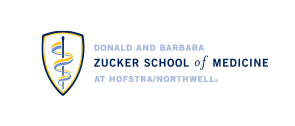A distinct vagal anti-inflammatory pathway modulates intestinal muscularis resident macrophages independent of the spleen
Publication Date
2014
Journal Title
Gut
Abstract
The cholinergic anti-inflammatory pathway (CAIP) has been proposed as a key mechanism by which the brain, through the vagus nerve, modulates the immune system in the spleen. Vagus nerve stimulation (VNS) reduces intestinal inflammation and improves postoperative ileus. We investigated the neural pathway involved and the cells mediating the anti-inflammatory effect of VNS in the gut. The effect of VNS on intestinal inflammation and transit was investigated in wild-type, splenic denervated and Rag-1 knockout mice. To define the possible role of alpha 7 nicotinic acetylcholine receptor (alpha 7nAChR), we used knockout and bone marrow chimaera mice. Anterograde tracing of vagal efferents, cell sorting and Ca2+ imaging were used to reveal the intestinal cells targeted by the vagus nerve. VNS attenuates surgery-induced intestinal inflammation and improves postoperative intestinal transit in wild-type, splenic denervated and T-cell-deficient mice. In contrast, VNS is ineffective in alpha 7nAChR knockout mice and alpha 7nAChR-deficient bone marrow chimaera mice. Anterograde labelling fails to detect vagal efferents contacting resident macrophages, but shows close contacts between cholinergic myenteric neurons and resident macrophages expressing alpha 7nAChR. Finally, alpha 7nAChR activation modulates ATP-induced Ca2+ response in small intestine resident macrophages. We show that the anti-inflammatory effect of the VNS in the intestine is independent of the spleen and T cells. Instead, the vagus nerve interacts with cholinergic myenteric neurons in close contact with the muscularis macrophages. Our data suggest that intestinal muscularis resident macrophages expressing alpha 7nAChR are most likely the ultimate target of the gastrointestinal CAIP.
Volume Number
63
Issue Number
6
Pages
938-948
Document Type
Article
Status
Faculty
Facility
School of Medicine
Primary Department
Molecular Medicine
Additional Departments
Neurosurgery
PMID
DOI
10.1136/gutjnl-2013-304676


